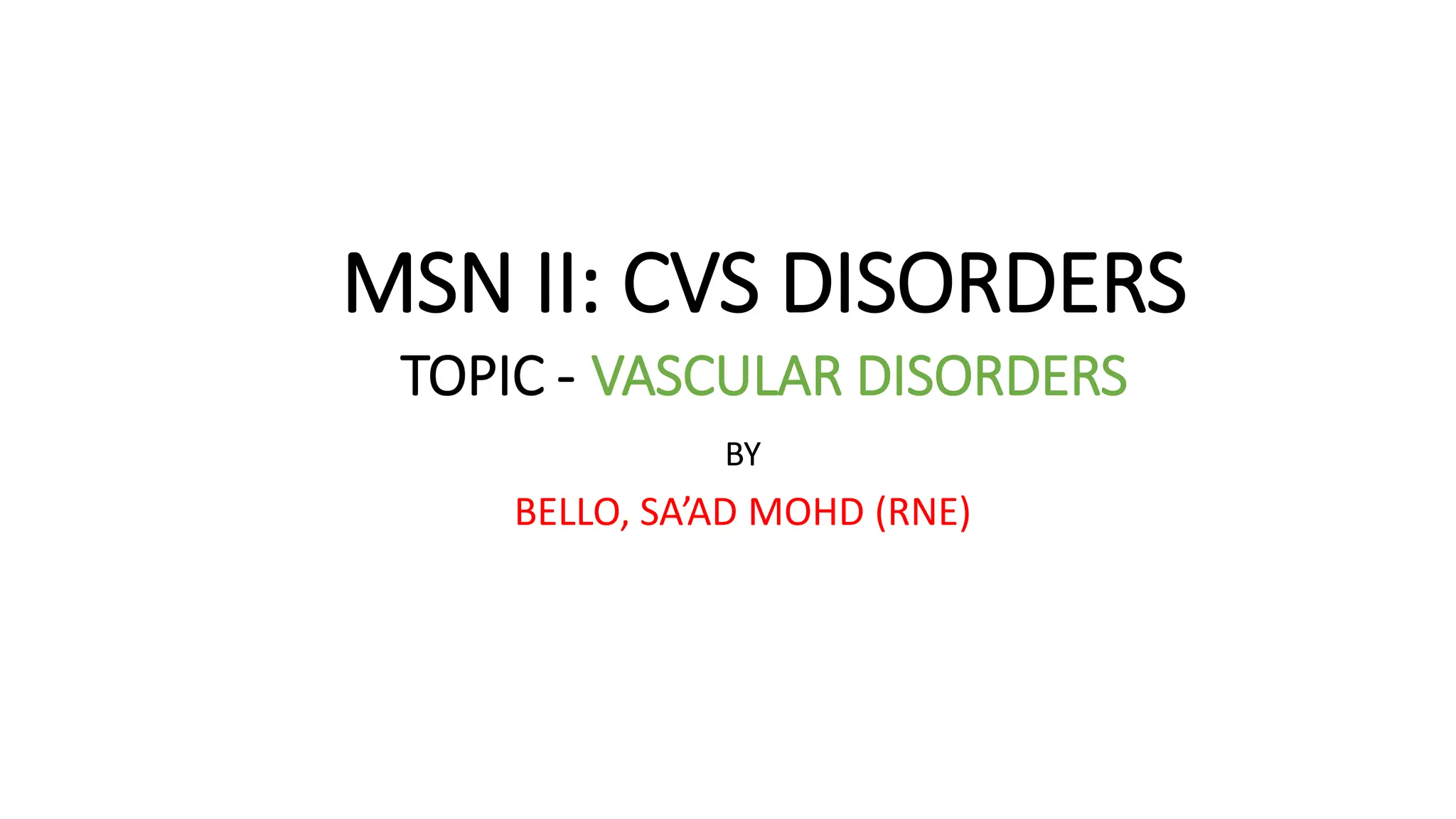The document discusses various vascular disorders including atherosclerosis, arteriosclerosis, and aneurysms. Atherosclerosis involves the buildup of plaque in artery walls which can restrict blood flow. Risk factors for atherosclerosis include age, diet, smoking, diabetes, and hypertension. The document details the causes, stages of development, effects, treatment and complications of various vascular disorders.




















